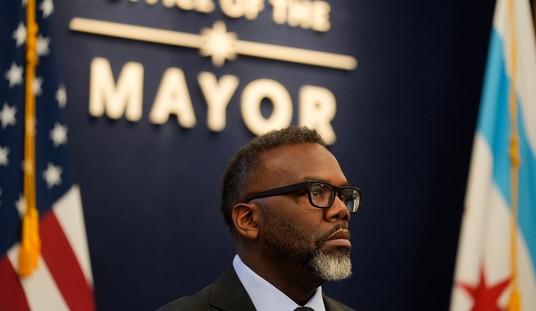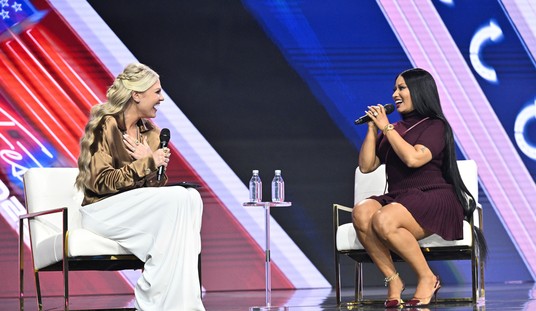*If* there were a way to confine people to their communities then this might be true. An area where the virus hasn’t spread much could be reopened, loosely contained somehow, and held to its own population-specific benchmark for testing. A town of 20,000 people, say, could be expected to perform 1,000 tests a week in order to gauge the extent to which the disease is spreading locally. If tests show a meaningful uptick, more rigorous social distancing measures would need to be reimposed.
But if we can’t loosely contain communities, what alternative is there to widespread testing? I offered the example yesterday of Louisiana and Mississippi. Louisiana has had a major outbreak; Mississippi was resistant to stay-at-home orders before finally giving in. We should expect Mississippi, but not Louisiana, to want to reopen ASAP. How do those two states negotiate their shared risk? Either Louisianans will extend their own outbreak into Mississippi by bringing it in or Mississippians will incubate their own outbreak and reinfect Louisiana while it’s trying to recover. Or both.
The thorough way to do this in the absence of rigid borders between states is to have enough testing available to monitor the entire country. But maybe there’s no time?
Acosta: Don’t you need a nationwide testing system for the virus before you reopen?
Trump: No. We have a great testing system. We have the best testing system in the world… Do you need it? No. Is it a nice thing to do? Yes pic.twitter.com/8zXg2MV4Dv
— Acyn (@Acyn) April 9, 2020
Pelosi’s already speculating about scientists warning the White House “You can’t do this, it is only going to make matters worse if you go out too soon” if Trump plows ahead with reopening the country before there’s data to show that it’s safe-ish to do so. Mike Pence also seemed focused less on arbitrary dates and more on data at yesterday’s briefing:
Without offering specifics, Pence listed conditions that appear to be many weeks, if not many months, from being met. He explained that while it was important to “reopen” the country, it was even more so for it to “stay open.” This was a reference to concerns that lifting injunctions against venturing out in public could allow for a return of the coronavirus.
“No one wants to reopen America more than President Donald Trump,” Pence said, even as he hinted that expectations for a speedy reopening were unrealistic. He said that data would ultimately “inform the president’s decision and timing.”
Pence said that “the best thing we can do to reopen America is put the coronavirus behind us, to reach the end of that curve with as little loss of life or hardship as possible.”
How much data might we need? Scott Gottlieb thinks we could get by on 750,000 tests per week nationally, a number we’ve already surpassed (there were 960,000 tests this past week) — but only after we’ve mostly eliminated the spread via social distancing, a process we’re currently engaged in. That’s the number after a full national “reboot” on the virus, in other words. The number of tests we’d need at a moment when the virus is still epidemic is … more like several million per week.
How much? This is subject of intense discussion and analysis. Likely several million or more. One metric: there are about 4 million outpatient visits for primary care services a week. We may want to make covid testing routine. We can get there. But it’ll take additional steps 4/n
— Scott Gottlieb, MD (@ScottGottliebMD) April 10, 2020
We need a bigger market for platforms outside traditional healthcare setting. Business community may consider taking active role in deploying testing near workplace so consumers have easy access to routine tests. This would expand market, drive capital investment in systems 6/n
— Scott Gottlieb, MD (@ScottGottliebMD) April 10, 2020
No matter. According to WaPo, Trump is looking to reopen some areas *before* May 1.
In phone calls with outside advisers, Trump has even floated trying to reopen much of the country before the end of this month, when the current federal recommendations to avoid social gatherings and work from home expire, the people said. Trump regularly looks at unemployment and stock market numbers, complaining that they are hurting his presidency and reelection prospects, the people said…
White House advisers have contemplated scenarios in which some “hot spot” states will not be ready to reopen as quickly, the people familiar with the matter said. There have already been vigorous debates, with public-health experts and some presidential advisers warning against reopening too soon, while key members of the president’s economic team — and some conservatives in the vice president’s orbit — push for a quicker return to normality.
Among those pushing to reopen the economy, according to senior administration officials, is Marc Short, the vice president’s chief of staff and a top adviser to Trump. Short has argued there will be fewer deaths than the models show and that the country has already overreacted, according to people with knowledge of his comments.
It’s weird that Pence’s advisors are gung ho to reopen soon whereas Pence himself sounds sober about the risk of doing that. Maybe they’re hoping for a promotion? The president appreciates staffers who tell him what he wants to hear.
Trump lacks the authority to reopen anything, of course. Those are all local decisions, but he has such immense influence over Republican opinion that a red-state governor’s or mayor’s decision to defy him might be politically ruinous — in normal times. In the age of a global pandemic, when people are afraid for their lives, it’s anyone’s guess how Republican voters will react to a local GOP official choosing to side with health authorities over Trump if they deem it unsafe to reopen. No governor in the country has received more praise for his handling of the crisis than Republican Mike DeWine of Ohio, and DeWine’s firmly in the “listen to the scientists” camp:
Who should make any decision to relax restrictions?
“HISTORICALLY HEALTH ISSUES LIKE THIS ARE HANDLED BY GOVERNORS, THEY ARE HANDLED BY MAYORS, AND I THINK THAT'S GENERALLY WHAT PEOPLE EXPECT.” – Gov DeWine
— Jim Sciutto (@jimsciutto) April 10, 2020
DeWine got a glowing write-up in WaPo today for the then-controversial decision he made on March 4 to shut down a fitness expo in Columbus that was set to draw 60,000 people a day. The U.S. had few cases of coronavirus at the time. It seemed like a needless overreaction to a hypothetical threat at great economic cost. A month later, Ohio’s done so well in containing the spread that hospitals prepping for thousands of patients have seen only hundreds. Some of their medical workers are planning to help out in New York and Detroit because they’re unneeded at home. Trump won Ohio easily in 2016 and has lots of loyal fans there, but DeWine’s success at containment is evident. If Trump says “reopen” and DeWine says “unsafe,” whose side do they take?
“The death tolls in Italy and New York probably did more to change behavior on the ground than all of Trump’s press conferences or Dr. Anthony Fauci’s TV appearances,” said Jonah Goldberg in a piece today about the silliness of the “reopen or not reopen?” debate. Some people will rush back to work if local businesses reopen, whether for reasons of simple economic necessity or some sort of skepticism about the virus. But most are going to demand evidence of progress before making a move. A poll out today found 72 percent are unwilling to attend pro sports events until a vaccine for the virus is available, which will take more than a year. There was no sharp difference between self-described sports fans and others, either. For Trump, I think, the “reopen” debate is mostly a matter of covering his own butt politically: If he endorses going back to work ASAP and governors defy him, he gets to blame them for the state of the economy this fall instead of taking responsibility. It’s a buck-passing exercise more so than a serious policy proposal.








Join the conversation as a VIP Member